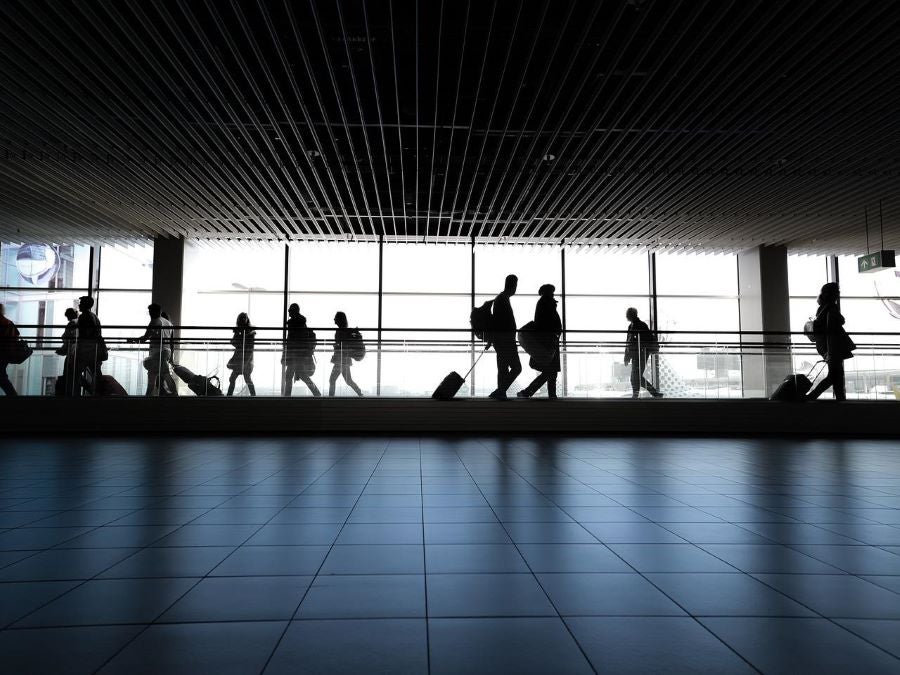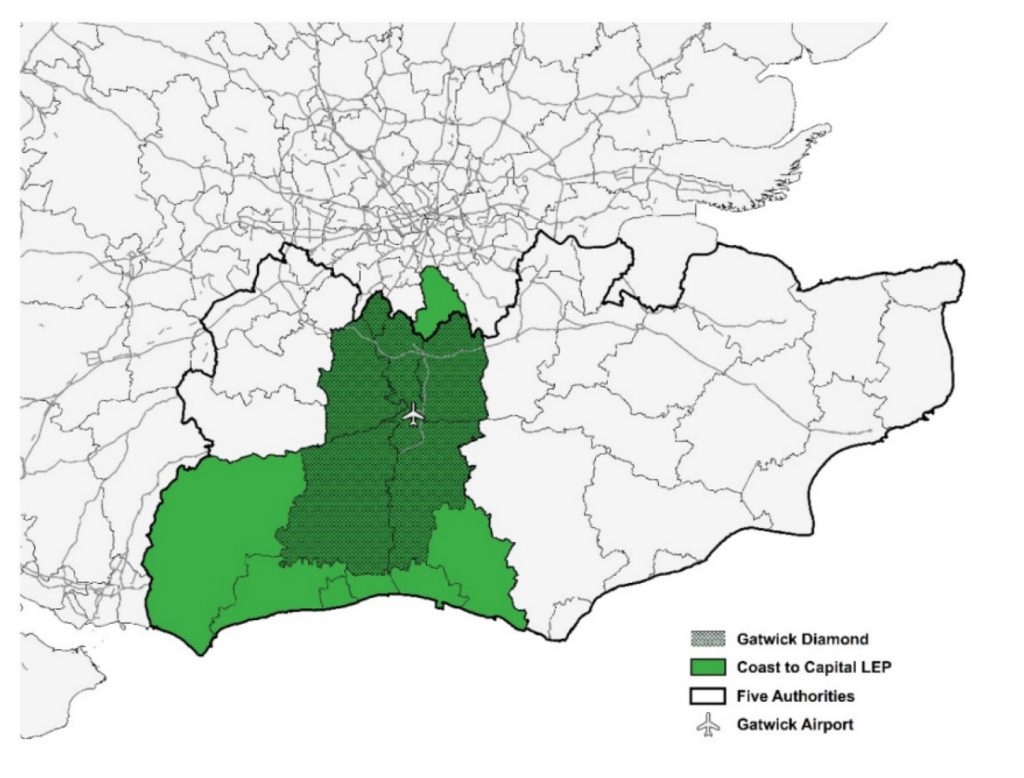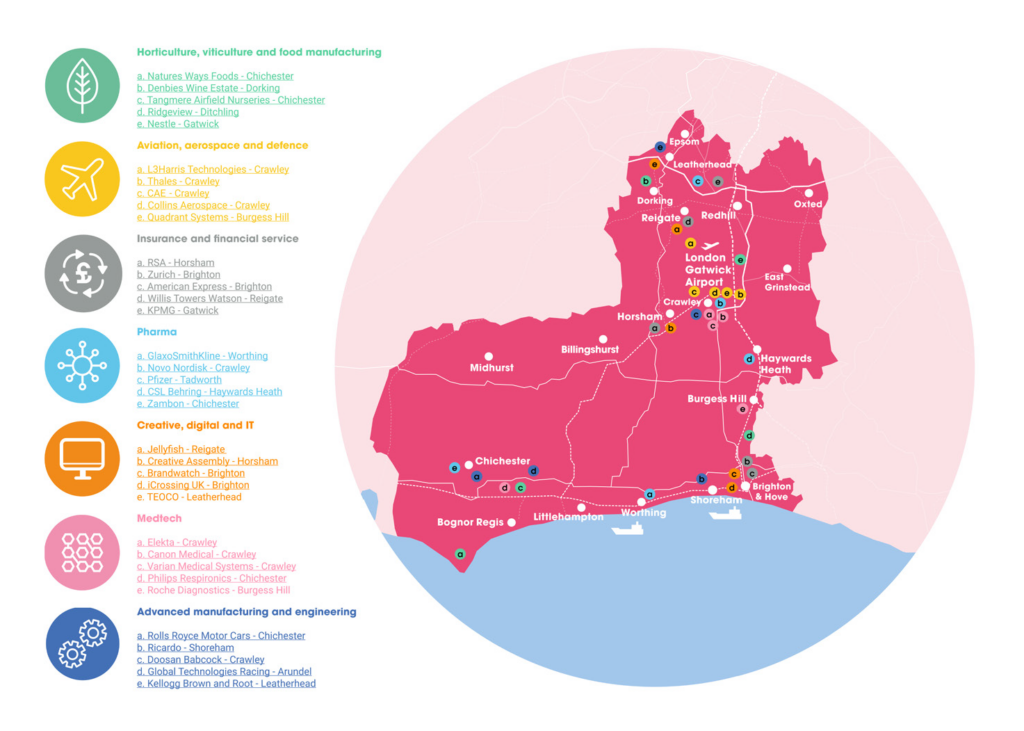
Gatwick’s South Terminal reopened for flights in March 2022, with the airport having operated a single terminal since the early days of the pandemic. Since the lifting of restrictions, it has been noted that passenger numbers have returned to around 80% of pre-pandemic levels.
Gatwick airport represented a total of 36,700 jobs and £2.1bn in gross value added (GVA) in the UK in 2020. GVA measures the value of goods and services produced in an area or industry. The airport is also expected to experience an increase in productivity, output, and labour supply; by 2028, it is predicted that the airport’s footprint will increase to 139,700 jobs and £9.3bn in GVA.
Short-haul travel and low-cost airlines based at Gatwick have contributed to the airport’s growth, while long-haul routes are important for international trade. The airport also welcomed new airlines such as JetBlue and Norse Atlantic over the past year and saw an increase in flight numbers from airlines such as British Airways, Vueling, and Wizz Air.
In addition, by providing thousands of jobs across the region and recruiting over 400 security staff members in summer 20222, Gatwick Airport provides a boost the local economy.
Airport Economic Zones
An Airport Economic Zone (AEZ) is a suburban area whose infrastructure, land-use, and economy are centred on an airport. Gatwick Airport has recently published a report which explores the potential of the region around Gatwick Airport and the advantages of AEZs.
Due to the fact that business and cargo markets are becoming more important, industries in surrounding areas are also important. Airports and their surroundings share the same concerns as they seek investment and AEZs bring airports and regions together.
Gatwick recently published a report outlining the potential of its own AEZ, which which outlined three regional areas surrounding the airport:
How well do you really know your competitors?
Access the most comprehensive Company Profiles on the market, powered by GlobalData. Save hours of research. Gain competitive edge.

Thank you!
Your download email will arrive shortly
Not ready to buy yet? Download a free sample
We are confident about the unique quality of our Company Profiles. However, we want you to make the most beneficial decision for your business, so we offer a free sample that you can download by submitting the below form
By GlobalDataThe Gatwick Diamond, a 600 square mile region from Brighton on the south coast up to Croydon in the outskirts of London and locations both east and west of Gatwick.
The Coast to Capital, a 1060 square mile region with a network of functional economic hubs around Gatwick Airport, including Greater Brighton, West Sussex, East Surrey, and Croydon.
The Five Authorities, a 3545 square mile region including all of West and East Sussex, Surrey, Kent, and Brighton & Hove.

Credit: Oxer.
The report Concludes that a successful AEZ includes a clearly articulated regional identity, created from attributes that make a region stand out, the utilization of both local and national political power, and having skills, innovation, and technical education at their heart.
For example, Manchester Airport’s AEZ – The Manchester Enterprise Zone – includes the Manchester Airport Academy alongside 5 other higher education institutes, and is home to businesses in the Logistical, Textile, Pharmaceutical, and Medical sectors.
A Gatwick Airport spokesperson, speaking with Airport Technology, said: “If Gatwick is successful in its plans to bring its Northern Runway into routine use alongside its Main Runway, it could create a £2bn boost and an additional 18,400 jobs for the region by 2038, including jobs in construction and engineering.
Gatwick has long hoped to bring the Northern Runway into regular operations in order to increase the capacity at the airport. The proposal is currently in the public consultation process. If all goes to plan the Northern runway is expected to start operations by mid-2029.
However, there is opposition to the project in the local community. Understandably, local communities and campaign groups such as the Campaign Against Gatwick Noise and Expansion have voiced opposition to the plans due to the increase in pollution and noise, calling the proposal a “a cocktail of negatives”.
“Gatwick is also extending its register for local businesses interested in supplying the airport and launched its Outline Employment, Skills and Business Strategy (OESBS),” the Gatwick spokesman says.
“The OESBS aims to ensure local people are supported through, long-term work experience, apprenticeship and graduate programmes, and by developing construction training and upskilling opportunities with industry training partners.”
Reconsidering investment
According to UK-based urban policy research charity The Centre for Cities, Crawley – the nearest town to the airport – was named the town most at-risk of job losses due to Covid-19.
In 2020, staff numbers at Gatwick Airport were reduced by over 40% despite pre-pandemic statistics highlighting that the airport supported one in 12 jobs within the region as well as contributing £2.7bn to regional GDP.
The Gatwick spokesperson says: “While the airport remained open throughout the pandemic, passenger numbers dropped to unprecedented low levels and it was against this backdrop that swift decisions were taken to protect the business as early as March 2020, with a company restructure, moving all operations to a single terminal and suspending much of the capital investment programme.”
The airport expects to be rebuilding over the next two years and aims to be in a position where it can take pursue new trade and investment opportunities.
“We will use this report, plus further roundtable feedback, to take next steps that could help inform future work, including examining successful city-based inward investment models, developing a greater understanding of what a successful Gatwick zone would look like, ensuring progress on a Gatwick AEZ links in with existing work, and exploring other geographies to include in any future Gatwick AEZ,” the spokesperson adds.
A sense of direction
Developing an AEZ would allow the airport and surrounding region to attract investment. Research by Gatwick Airport supports this, as the development of AEZs elsewhere has encouraged the government to make investments in infrastructure around airports.
AEZs which stem from combined authorities such as Manchester Enterprise Zone or local authorities grouped together, such as in the Heathrow Strategic Planning Group, have the advantage of quick decision making.
The report outlines the key business sectors Gatwick Airport attracts, which includes aviation, aerospace, and defence industries around the Crawley area. The most specialised sector in the Gatwick Diamond is Air Transport, at 9 times more specialised than the national level.
Air Transport is also the most specialised sector in Coast to Capital with a location quotient of 5, followed by Manufacture of Computer, Electronics and Optical Products at 3 times more specialised.

Credit: Coast to Capital.
Horticulture, viticulture and food manufacturing industries are also spread across the Coast to Capital rural areas.
The Five Authorities area has a similar sectoral profile. Fishing and Aquaculture and Forestry and Logging are the top two most specialised sectors in the area. However, Air Transport comes in a close third.
Future considerations will most likely include discussion regarding the type of inward investment that the region would be looking for. Discussions would also determine what companies are the target companies and which markets are target markets such as domestic or foreign markets.
In addition, it has been suggested that the surrounding areas around Gatwick could be used for new commercial spaces and new facilities being constructed.
Coworking and flexible office space has become an important asset as well as plots for manufacturers and scientific uses. The area already has The Crawley Innovation Centre and the Institute of Technology which demonstrates innovation in the region.
An inaugural Regional Economic Summit is taking place at Gatwick on 3 November for stakeholders to discuss the form of a future Gatwick AEZ.



